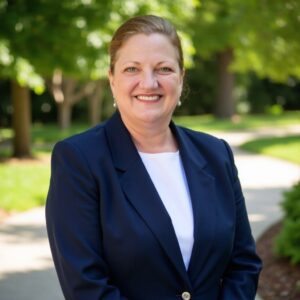
Featured in this week’s Women in Architecture spotlight is Kacy Clarke, the Chief Technology Officer for Chiefly & Co, a startup management consulting firm helping clients achieve both sustainability and profitability.
She brings extensive experience to that role, having held executive roles at major technology, consulting and financial services organizations driving technology innovation and transformation initiatives and guiding organizations through complex IT and business challenges.
As a Certified Chief Architect with IASA Global, Clarke is also the co-founder of the SustainableArchitectures.org community and a key contributor to the Responsible AI initiative at SustainableIT.org, bringing together IT architects and technology leaders to establish principles, patterns and frameworks to educate and embed sustainability as a cultural imperative in technology organizations. It is in that capacity that she is spearheading the Sustainable Architectures Summit in London on June 24th. Details are here: https://sustainablearchitectures.org/about-london-sustainable-architecture-summit-2025/
Below, Clarke shares some of her insights about her successful career and what she sees in the future.
Question: How did you get your start in technology?
Answer: I’m still doing what I went to college for when I was 18! Undergrad and grad degrees in computer science, and a long career building systems and driving innovation. Still love it!
Q: What is your role at your company?
A: I am an independent consultant and a fractional CTO. Currently I split my time between working with clients on accelerating cloud transformation, CTO of a startup Sustainability consulting firm, Chiefly&Co, and my volunteer work as the Co-Founder of SustainableArchitectures.org, which is leading transformation of the technology architecture profession to incorporate sustainability as a key component of technology strategy and implementation. I also speak and write frequently on Responsible and Sustainable AI.
Q: What areas of technology have you developed the most expertise in?
A: The following:
- IT Strategy
- Cloud computing and cloud transformation – 14 years leading cloud transformation programs for primarily large financial services clients
- Enterprise architecture – particularly in financial services
- Sustainable IT
- Responsible and Sustainable AI
Q: What trends are you tracking in these areas and why?
A: Technology sustainability – the rapid expansion of cloud computing and artificial intelligence is projected to drive the energy, water and e-waste demands to 3x-5x current levels, bringing with it unsustainable environmental impacts. Technology leaders need new skills, tools and approaches to both drive up innovation and optimize workloads to manage this growth and impact. We have a whole industry to retrain.
Artificial Intelligence – as my Masters Degree is in AI, and having watched multiple AI hype cycles over the years, this recent explosion of Generative and Agentic AI is the largest, but with dramatically fewer guardrails and overhyped expectations. Yes, there are massive opportunities with AI, but there are also serious risks, including security, privacy, digital rights, inaccuracies, hallucinations, poor quality results, concentration of control in a few players, jailbreaks, lack of humans in the loop, ethical issues, bias, environmental impacts, massive consumption of capital and the impact on people, just to name a few. I am a strong advocate of Responsible AI with intelligent guardrails and the need for quality AI education.
FinOps, GreenOps and Technology Efficiency – For decades we’ve been sizing systems for peak load and highest level of availability, but do we really need all that computing power just sitting in reserve or only used part time for dev and test? The average utilization of all the data center equipment or cloud resources is around 11%, and I’ve had clients with utilization scores of < 8%. Cloud computing has only made this worse even though we have automation to help us manage our estates. I’m following all the new approaches, in architectures, in software design and in operations, in optimizing our workloads and making every bit of compute, storage, network, energy, heat and e-waste optimized and reused if possible. BTW, it will save a ton of money and slow down the environmental impacts.
Cutting Edge Energy and Hardware – quantum computing, SMR nuclear power generation, green data centers, high efficiency AI chip designs, 5D and DNA storage, carbon capture, green energy, battery storage, hardware designed for circular economy, etc. – we need a number of significant breakthroughs in hardware and energy production to meet the future demand of AI, electrification, digital transformation and rapid scientific innovation.
